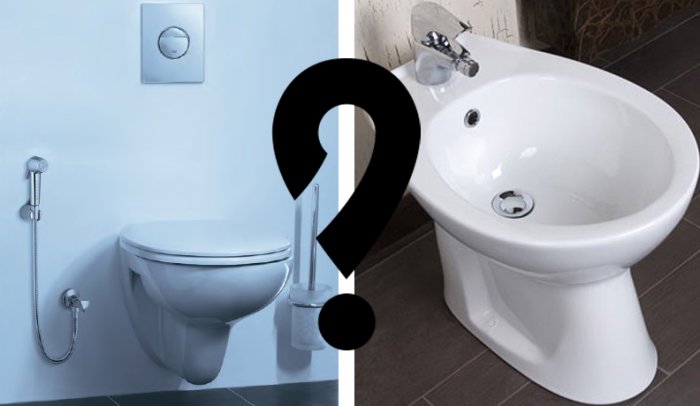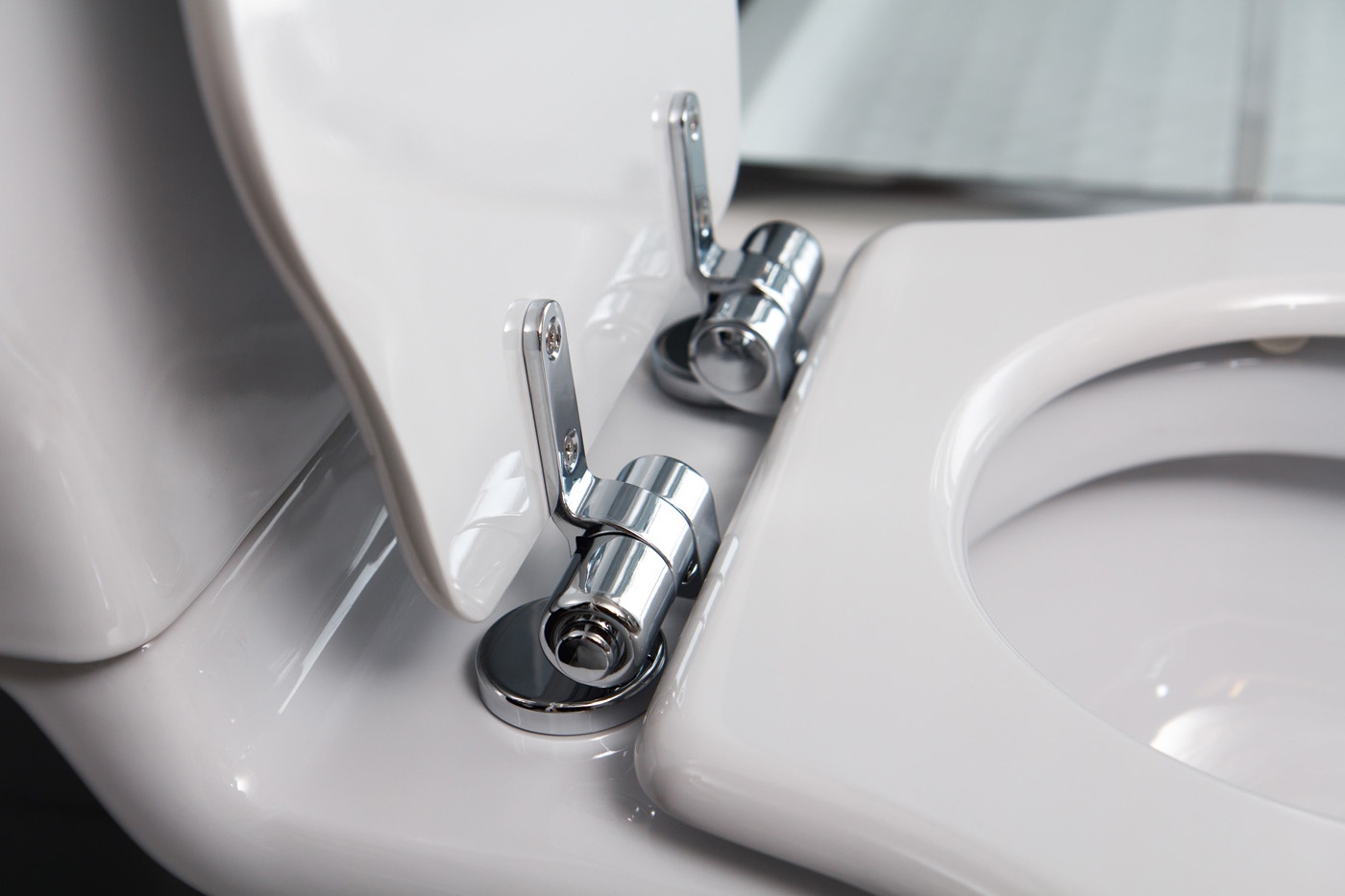Water does not fill into the toilet tank
Plumbing fixtures play a significant role in modern life. If in the Middle Ages everything was simple - no hygiene, now almost any toilet room looks like a spaceship.
Devices designed to fill our lives with comfort have risen to such a high level in their technological effectiveness that now not every person will be able to figure out how everything works there, and whether it is even possible, in the event of an unforeseen situation, to fix the malfunction on their own. And, which is completely logical, calling a specialist costs money. Sometimes quite a lot, because you have to pay not only for a new part, but also pay for the work itself. Where is the guarantee that the technician will install a high-quality spare part? There is no such guarantee.
The content of the article
Why doesn't water flow into the toilet cistern?
There are situations when plumbing equipment fails; this phenomenon is quite standard and natural. Anyone could handle old models of devices, but modern devices are so technologically advanced that it is often difficult for an inexperienced person to find a breakdown and fix it on their own.
If the drain tank is dry, you need to give this problem time and attention, otherwise it may lead to more serious problems. But you shouldn’t overpay extra money to call a specialist.You can try to figure it out on your own. So what could be the reasons that the tank has stopped filling?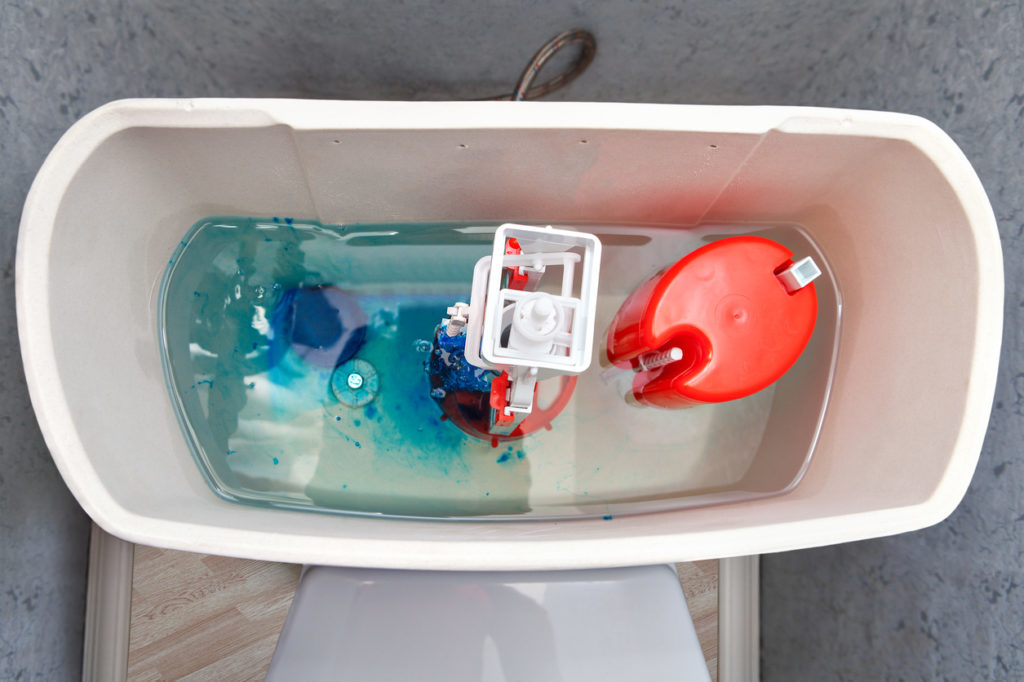
Attention! Before disassembling the toilet, as soon as you see that water is slowly filling the tank and is not flowing at all, go to the tap and check if there is any water at all. No matter how trivial it may sound, in almost forty percent of cases it is the lack of water in the water supply that is the reason that the tank does not fill.
If the system is working properly and the pressure is good, then you need to start looking for a problem elsewhere. Sometimes toilets are equipped with separate risers. Check in the basement to see if the cap is blocked. Sometimes even a conversation with neighbors is enough to figure out the reason. It could be:
- Incorrect placement of the float - inspect it first;
- blockage or damage in the supply pipe - sometimes this may well cause a weak flow or its complete absence;
- the presence of rust or sand at the place where the pipe is connected to the tank - this is especially typical if the water supply system has recently been repaired;
- the inlet valve is damaged or clogged, which, naturally, will prevent the tank from filling.
In addition, the cause of such a malfunction can be over-tightened fasteners. Double-check everything carefully, twist the connections. Everything should fit snugly, but not be overtightened. Is there mucus and plaque on the walls inside the toilet? This may also be one of the reasons for the malfunction.
What to do if water does not flow into the toilet tank
If you decide to figure out the reasons why water does not get inside the tank and fix the problem yourself, you will need to work a little. There is absolutely no guarantee that you will succeed, but trying is not torture.After all, your image as a man is at stake, and there is an opportunity to hold back your finances a little. Of course, it is impossible to describe all the malfunctions, but we will try to consider the most common ones.
Eliminating float misalignment
If water does not fill the tank at all, then you should not blame the float. If it flows a little, but does not reach the required minimum, then inspect the float and check that it is positioned correctly.
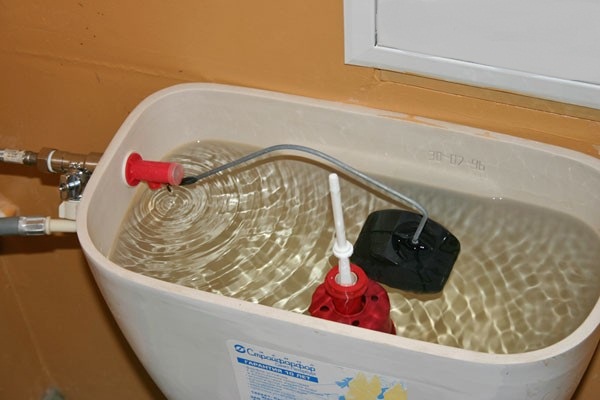
After the tank lid is removed, the entire inside will be revealed to your eyes, as well as the mechanism and lever, at the end of which the float is attached. It is this that activates the inlet valve, closing it when the water level reaches the required level.
If the float arm is misaligned, it may shut off the water flow prematurely. It is necessary to set it to its normal position by slightly twisting and bending the lever. This should restore system functionality.
Cleaning the supply valve
If there is water in the tap, but does not reach the drain tank, it is likely that the inlet valve is clogged. Dirt, sand, plaque or mucus may accumulate in it. It is better to carry out preventive work in a timely manner and such problems will not arise:
- Shut off the water supply to the tank.
- Disconnect the water supply hose from the tank and pull it out. Work carefully but persistently. Water sediment often makes unscrewing very difficult.
- Inspect the valve for any blockage. Use steel wire to remove it.
- Open the water tap slightly - this will allow the water pressure to remove any remaining dirt.
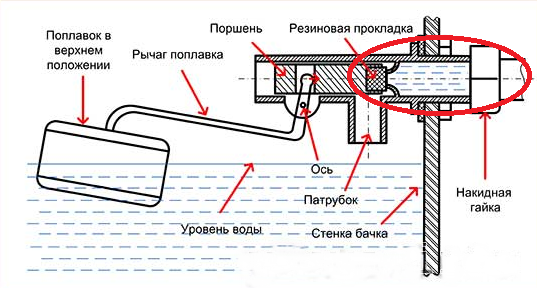
After solving the problem, all that remains is to put the system back together. The fastening should be tight, but not overtightened.Check the water intake level, if necessary - make adjustments by bending the lever and adjusting the float.
Faulty water supply hose
When solving the problem of lack of water in the tank, do not forget to inspect the supply hose. Its damage is in second place among all probable causes:
- Shut off the water supply in the apartment or on the riser.
- Disconnect the supply hose. Examine it. If holes or cracks are noticeable, the hose must be replaced - there are no options.
- If no damage is noticeable, then place the hose in a bucket and open the valve slightly.
- Now the water itself will show the location of the fault, if any.
- Replace the hose. And calmly continue to use the toilet.
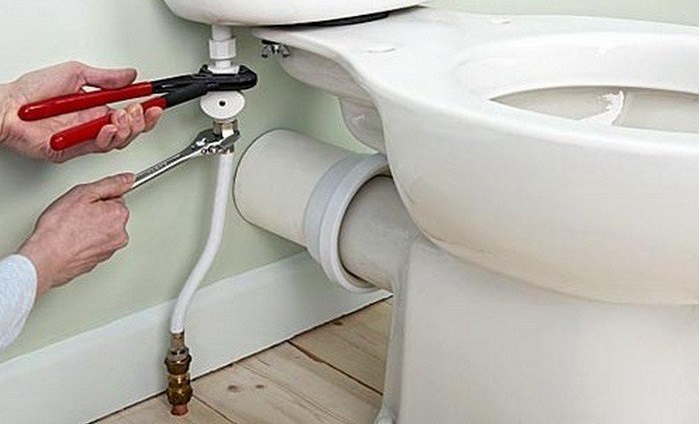
Clearing a clogged tank drain
If there is a blockage in the tank drain, this can also cause problems, although it will not affect the filling of the tank. Water will flow into it regularly, but it will not be able to drain:
- You need to unscrew the drain button and remove the lid.
- inspect the valve responsible for water discharge;
- If debris is visible on it, you should clean it with your hands.
If there is no debris, then the reason probably lies in the pipe connecting the toilet to the tank. Plaque and mucus may accumulate on the walls of the tank. All this must be cleaned in a timely manner.
Prevention is best done using chemicals. However, when working, do not forget about protecting your hands and respiratory tract.




